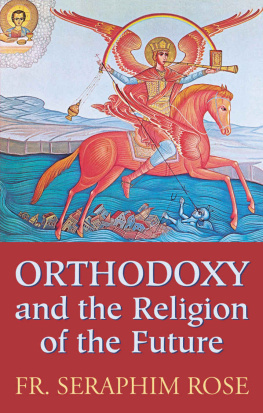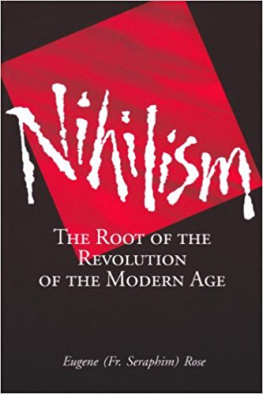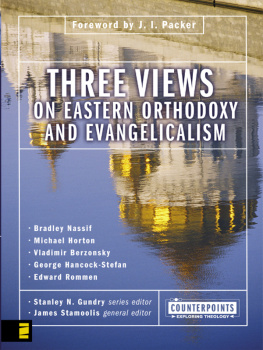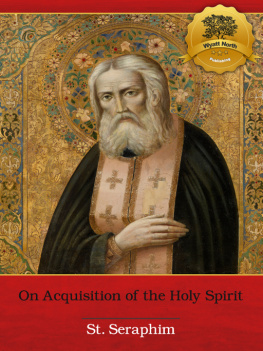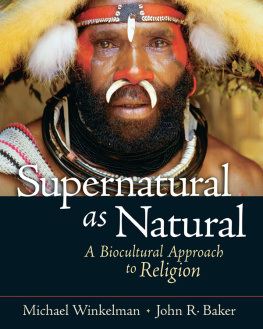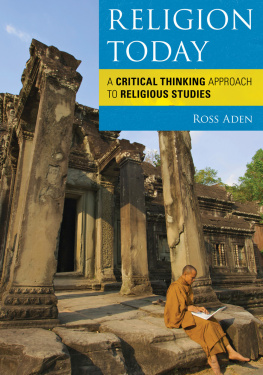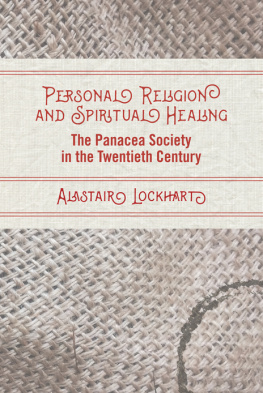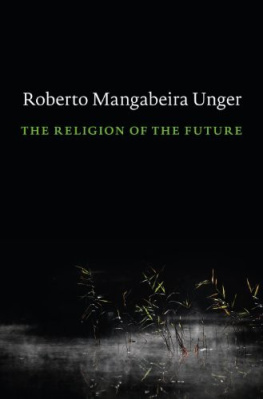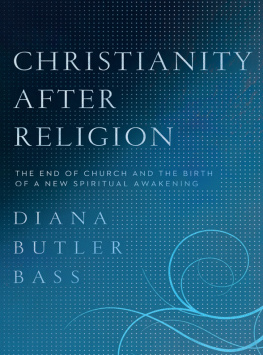
HIEROMONK SERAPHIM ROSE
1934 1982
ORTHODOXY
and the Religion
of the Future
BY FR. SERAPHIM ROSE
Fifth Edition
SAINT HERMAN OF ALASKA BROTHERHOOD
2004
Copyright 1975, 2004 by the
St. Herman of Alaska Brotherhood
P. O. Box 70
Platina, California 96076
sainthermanpress.com
First Printing: April 1975
Second Printing: August 1975
Third Printing: May 1976
Fourth Printing (Second Edition): March 1979
Fifth Printing (Second Edition): February 1983
Sixth Printing (Third Edition): January 1990
Seventh Printing (Fourth Edition): December 1996
Eighth Printing (Fourth Edition): January 1999
Ninth Printing (Fifth Edition): December 2004
Front cover: The triumph of the Archangel Michael over the antichrist, who is shown falling into the abyss together with the cities of this world at the end of time. Fresco by Pimen Maximovich Sofronov in the Sepulchre of St. John (Maximovitch) of Shanghai and San Francisco, below the Mother of God Joy of All Who Sorrow Cathedral in San Francisco.
Publishers Cataloging-in-Publication
Rose, Hieromonk Seraphim, 19341982.
Orthodoxy and the religion of the future / by Fr. Seraphim Rose.5th ed.
p. cm.
Includes bibliographical references and index.
ISBN: 188790400X
1. Orthodox Eastern Church. 2. Christianity and other religions. 3. Pentecostalism. I. Title
BX324.R67 2004
HOW NARROW IS THE GATE, and strait is the way that leadeth to life: and few there are that find it! Beware of false prophets, who come to you in the clothing of sheep, but inwardly they are ravening wolves. By their fruits ye shall know them.... Not everyone that saith to Me, Lord, Lord shall enter into the Kingdom of heaven: but he that doeth the will of My Father Who is in heaven, he shall enter into the Kingdom of Heaven. Many will say to Me in that day: Lord, Lord, have we not prophesied in Thy name, and cast out devils in Thy name, and done many miracles in Thy name? And then will I profess unto them, I never knew you: depart from Me, ye that work iniquity. Every one therefore that heareth these My words, and doeth them, shall be likened to a wise man that built his house upon a rock.
Matthew 7:1416, 2124
Contents
14,000-foot Mount Shasta in northern California.
Preface to the Fifth Edition
O N May 10, 1976, Fr. Seraphim Rose was driving home to the St. Herman Monastery in the mountains of northern California. He was coming from Oregon, where he had just picked up a shipment of his first published book, Orthodoxy and the Religion of the Future a book that would one day become spiritual dynamite, especially in Russia. The book was an examination of contemporary religious phenomena, symptoms of the new religious consciousness which prepared the way for one world religion and marked the beginning of a demonic pentecost in the last times. Never before had such a penetrating analysis of 20th-century spiritual currents been written, for until now no one had studied them so closely according to the timeless wisdom of the Holy Fathers.
In the early to mid-1970s, when Fr. Seraphim was writing his book, much of the phenomena he was describing was considered part of an aberrant fringe. But he saw what was coming: he saw that the fringe would become more and more the mainstream. He saw the frightening unity of purpose behind a wide range of outwardly disparate phenomena, and saw the end result looming over the horizon. As he travelled southward with this book which was to blow the mask off the most subtle forms of demonic deception in our times, it was appropriate that he should stop at a nucleus of neo-paganism in America: Later, after his ordination to the priesthood, he would return to bless the mountain. But his book would do more: it would move mountains.
1. How This Book Was Born
The seeds of Orthodoxy and the Religion of the Future had been with Fr. Seraphim for quite some time. In the early 1960s he had begun a monumental work, The Kingdom of Man and the Kingdom of God, which would trace the philosophical, spiritual and social currents of the last 900 years, and would include a large section entitled Orthodox Christian Spirituality and the New Spirituality. For years his monastic co-laborer, Fr. Herman, had been urging him to complete his magnum opus, but Fr. Seraphim had balked on the grounds that it was too big a job to undertake along with all the other tasks of their St. Herman Brotherhood, and that, besides, it was too intellectual and abstract. We need something more practical, he said. By this time his understanding of Orthodox Christianity had deepened considerably, both from study and from personal struggle, and he was better able to contrast pseudo-spirituality with a commanding view of true, sober and salvific spiritual life. Ironically, as he had grown in both inward and outward knowledge since the early 1960s, his writings had grown not more complex and abstruse, but more accessible, understandable, basic and to-the-point.
In 1971, Fr. Seraphim began to write and compile chapters for Orthodoxy and the Religion of the Future , serializing them in the Brotherhoods journal The Orthodox Word . Four years later, on Bright Friday, May 9, 1975, the fathers finished printing the first edition of the book. It sold out so quickly that they had to do another printing in August, and then again the following May. An expanded edition was published in 1979. The book had struck a responsive chord; the monastery received letters and visits from several people who had been delivered from spiritual deception after reading it.
2. The Clarity of a Patristic Mind
In the last century, the Russian Orthodox philosopher Ivan Kireyevsky explained how the acquisition of the Patristic mind enables one to see what others cannot: An Orthodox mind stands at the point where all roads cross. He carefully looks down each road and, from his unique vantage point, observes the conditions, dangers, uses, and ultimate destination of each road. He examines each road from a Patristic viewpoint as his personal convictions come into actual, not hypothetical, contact with the surrounding culture. These words exactly describe Fr. Seraphim and explain why his writings now seem so prophetic. It was not that he was a divinely inspired prophet to whom the mysteries of the future were revealed. Rather, it was that he had acquired the Orthodox Patristic mind, the mind of the ancient Holy Fathers; and with this he discerned where the road of his surrounding culture its general spiritual trend was headed.
When Fr. Seraphim was writing in the mid-1970s about the dangers of the neo-pagan cults, there were other cult-watchers around (although then they were not so widely listened to as when the cult-scare hit America in 1979, in the wake of the Jonestown massacre).Without the Patristic principles of spiritual life, however, they were not able to perceive the underlying unity behind the phenomena of UFOs, Eastern religions, and the charismatic revival all of which possess mediumistic techniques for getting in contact with fallen spirits under different guises.

